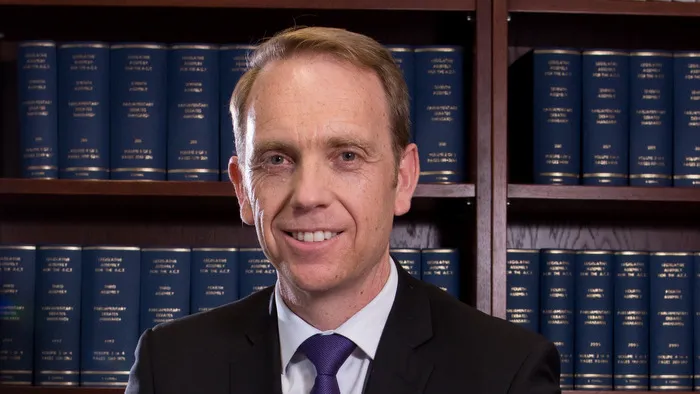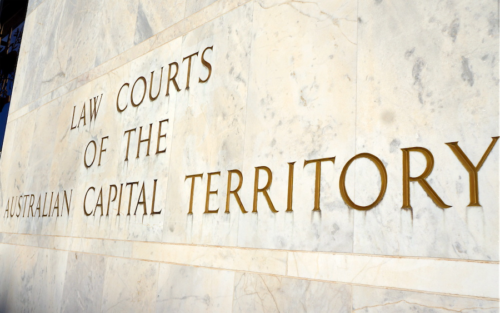
“The fiasco of the Spilt Milk festival has shown: trams are ineffective at evacuating large numbers of people. If the line is blocked, be it by people or fallen branches and trees in a storm, the whole operation comes to a halt,” writes BEATRICE BODART-BAILEY.
POLITICIANS need to be flexible. Earlier, Labor’s Simon Corbell had called the light rail proposal “a load of rubbish”, but by 2014 he had advanced to Capital Metro Minister.

He responded to criticism of the expense of the light rail with the remarkable statement: “City building is about more than simply economic logarithms, it’s also about making sure we deliver the best design outcome for the Nation’s Capital.”
And added: “Northbourne Avenue is a key approach route, building more roads for more buses is not befitting for a national avenue like Northbourne.”
They say, you can’t argue about taste, but calling the massive square, utilitarian boxes lining Northbourne Avenue “the best design outcome for the National Capital” is taking it a bit far.
As to the mess of overhead wires along the route of the tram permanently marring the view – neither London, Paris nor Berlin would permit this late 19th century invention run along their “national avenues”, that is, their grand boulevards, and at great expense moved the newly invented electric train underground. Above ground, buses were used; they could disappear from view on state and other important occasions. For Corbell, the buses might not have been “befitting for a national avenue like Northbourne”, but in London the red double deckers have become iconic, decorating the postcards of the metropole’s most important sights.
Not that I envisage the necessity of clearing Canberra’s national avenues for government parades: our chief and other ministers seem to be quite content with a photo op in front of a tram. However, we are facing climate change with more bushfires, heatwaves, floods, heavy storms and, according to Prof Rick McRae, even fire tornado events.
His research has shown that the latter occurred in the disastrous 2003 Canberra fire, and he warns: “We Canberrans… are facing unimaginable climate impacts and we must get on to the front foot to adapt to this.” (CN January 26).
The two inquiries into the 2003 bushfire identified shortcomings in the speed of the emergency response. A pre-condition for a fast response is wide, unobstructed roads for fire trucks and other emergency vehicles in one direction and cars evacuating people and their possessions in the other.
Yet the all-encompassing transport net for Canberra envisaged by our local government is to be a slow tram occupying a significant part of the road, inaccessible to other means of transport. In contrast, “bus only” lanes speed up public transport in normal times and expand the space for emergency vehicles when speed saves lives.
The fiasco of the Spilt Milk festival has shown: trams are ineffective at evacuating large numbers of people. If the line is blocked, be it by people or fallen branches and trees in a storm, the whole operation comes to a halt.
The same occurs when heavy weather tears down the tram’s overhead wires or causes an electricity black-out. Buses can avoid roads that are blocked, be directed to where people need to be evacuated, and be brought in from unaffected parts of town with loaded batteries.
In normal times, buses, unlike the tram, pick up commuters where they live, reducing the use of private cars and CO2, and when the need arises are able to assist with an accelerated emergency response.
In 2016, the world’s first governmental climate change declaration was sponsored by the Greens councillor Trent McCarthy, of the City of Darebin, in Melbourne. In Canberra, however, the chief minister was touting the importance of the non-climate-change-resilient tram.
In his “Statement of Ambition” he claimed that a light rail network is “a key urban renewal task” and essential “to developing the compact urban centres Canberra needs to attract the best people.”
This was based on the belief that the “quality of life and place, the amenities, ambience and facilities of cities become a critical competitive tool in attracting knowledge workers, who are themselves the magnets for external corporate investment and local expansion.”
Chief Minister Andrew Barr was convinced that the “world’s population is flocking to cities, as the global era is an urban era”.
Four years later, in 2020, the world fell under the spell of COVID-19. The population was no longer “flocking to cities”. Quite the opposite. In February 2021, the Regional Australia Institute documented that one in five city dwellers wanted to move to the country.
In even the best of city apartments, the lockdown confining people to small spaces was not just psychologically painful, but also increased infections as lifts and corridors were shared when emergency food shopping and walks were permitted.
With covid came the work-from-home-revolution and rapid development of easy digital communication by Zoom and similar systems.
Many office workers are no longer required to commute daily as companies are cashing in on savings in office rentals with employees working four days a week at home and using the company’s offices one day a week in rotation.
Public transport boardings are on the decline, yet our Greens/Labor government is still pursuing its dream of a comprehensive tram network for Canberra, even though it is not resilient to climate change, useless except for those living close to a stop, and producing a heavy financial burden for generations to come.
Historian Beatrice Bodart-Bailey is an honorary professor at the ANU School of Culture, History and Language and an emeritus professor of the Department of Comparative Culture, Otsuma Women’s University, Tokyo.
Who can be trusted?
In a world of spin and confusion, there’s never been a more important time to support independent journalism in Canberra.
If you trust our work online and want to enforce the power of independent voices, I invite you to make a small contribution.
Every dollar of support is invested back into our journalism to help keep citynews.com.au strong and free.
Thank you,
Ian Meikle, editor





Leave a Reply